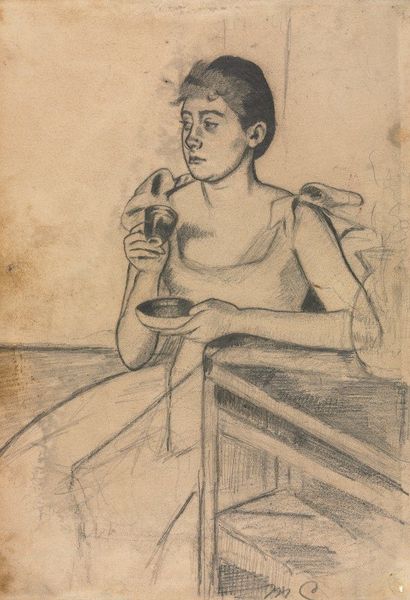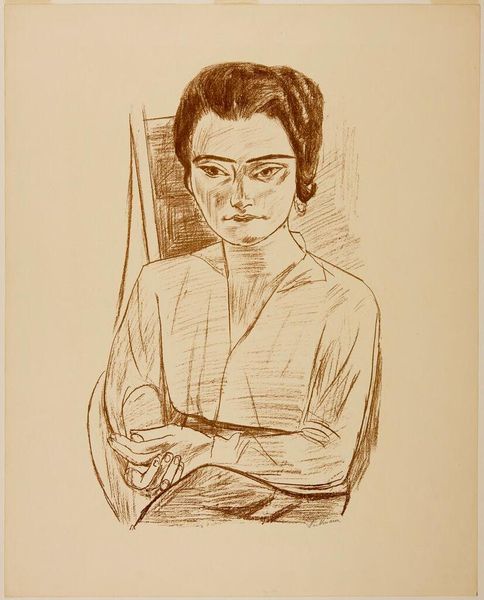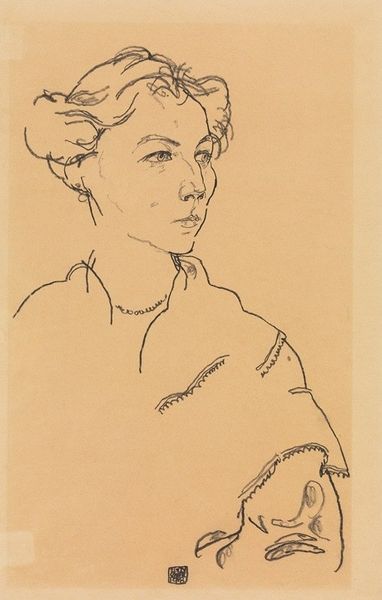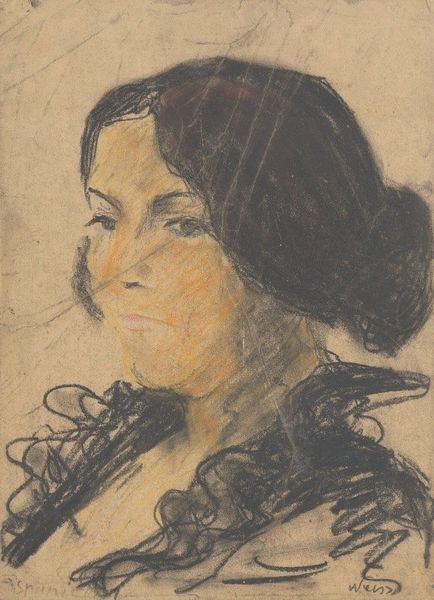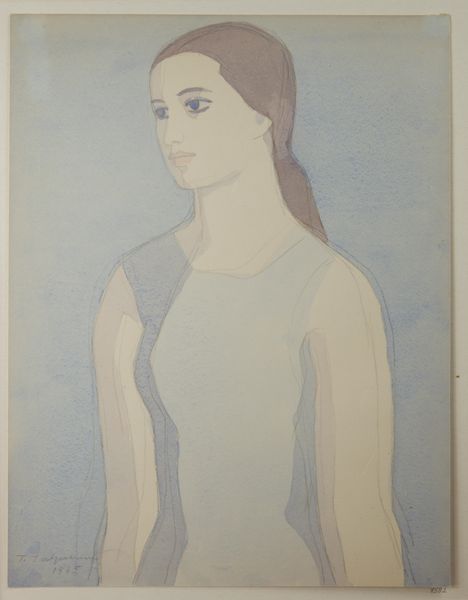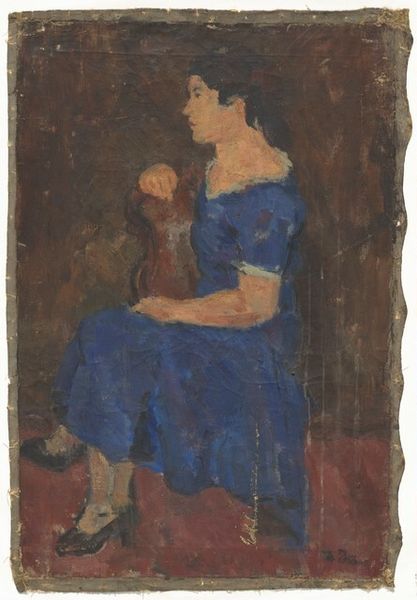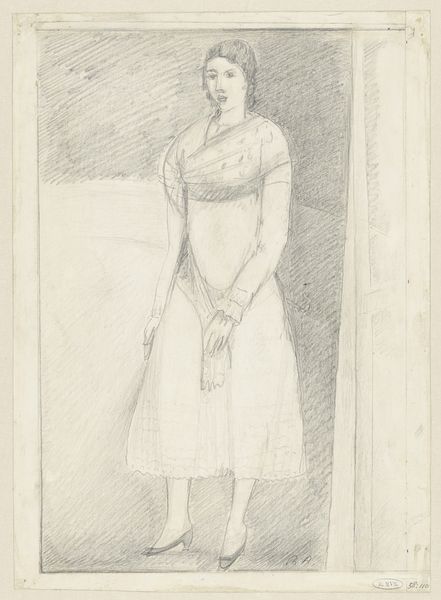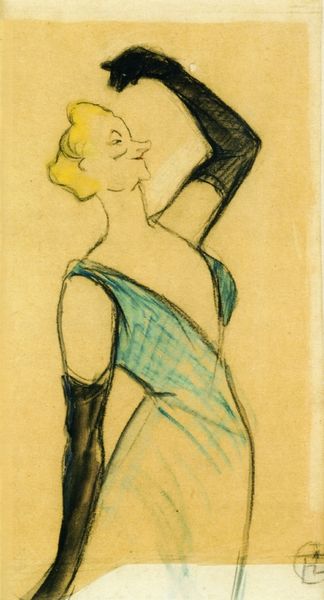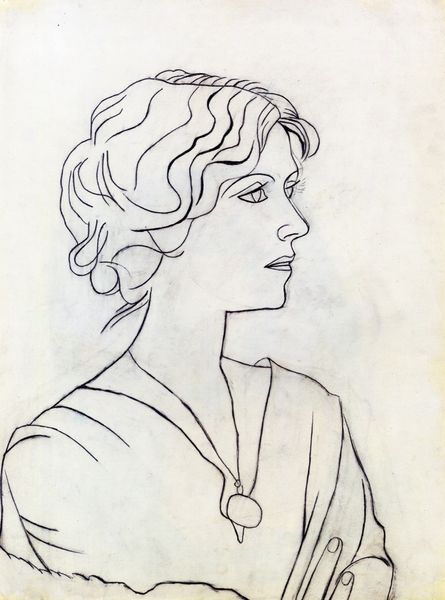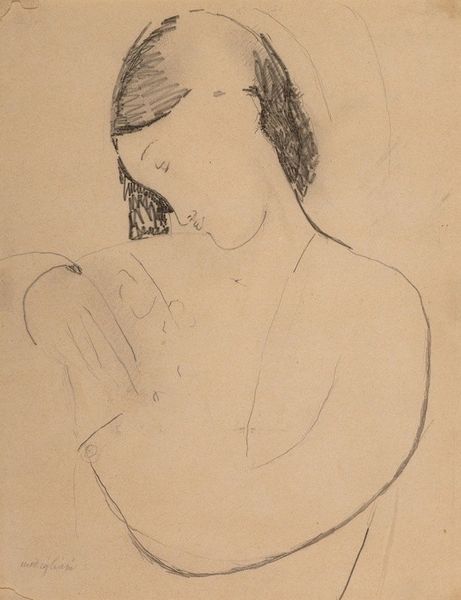
Copyright: Theodor Pallady,Fair Use
Curator: Welcome. Before us is "Woman in Interior," a work created by Theodor Pallady in 1948, executed in pencil and watercolor. It presents a seated woman in a domestic setting. Editor: My initial reaction is one of quiet contemplation. There's a subdued palette, the almost ephemeral quality of the lines giving the whole piece an air of transient melancholy. Curator: Pallady spent much of his career working in France, exposed to the Impressionists. However, unlike many who embraced the avant-garde, he synthesised the prevailing influence to make his own statement. One may notice the impressionist spirit in the delicate layering of watercolour in the subject's hair. Editor: That subdued color palette you mentioned creates a powerful mood, doesn’t it? Almost a sense of being suspended in time. The choice to depict the subject in what seems like a moment of reflection or waiting speaks to themes of isolation and quiet endurance, perhaps reflective of the postwar period. I’m wondering, who was she? And why was she painted? Curator: Unfortunately, information about the subject or the precise commission behind the drawing has been lost to time. But Pallady’s style focused on interiors. Perhaps the aim wasn't really about portraiture, but conveying the role of women in the home, or simply his dedication to the genre of the domestic interior? Editor: That resonates. The composition definitely keeps pulling me back to the interior. I am interested in this table she is positioned at – she appears almost like a part of the interior scene that Pallady is interested in conveying rather than as a individual portrait. The symbolism here becomes so nuanced. And look at her hands. Are they resting, poised, waiting? Are these visual metaphors for something else? I can imagine many feminist scholars arguing the artist captured here an honest reality that represents the female burden. Curator: Well, it's precisely the way Pallady presents her within the confines of her home – her gaze, slightly downward cast, adds another layer of complexity. We're given an opportunity to really ask and reflect on the role of women during this period. Editor: I am grateful for having had the chance to think aloud. Hopefully, the listeners found our perspective useful in reflecting upon and processing the work and its meanings. Curator: Indeed. Thank you for offering these enriching insights.
Comments
No comments
Be the first to comment and join the conversation on the ultimate creative platform.
